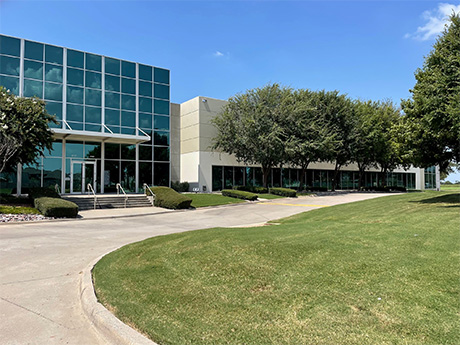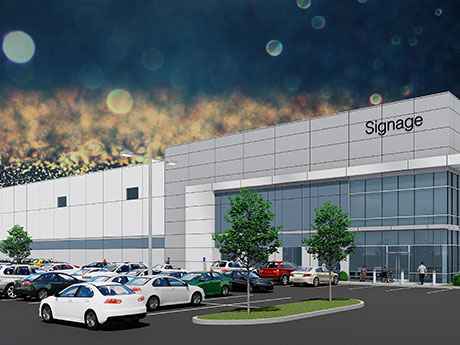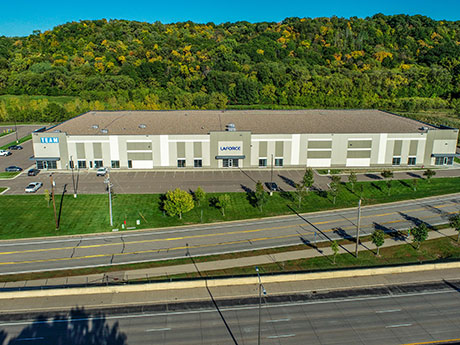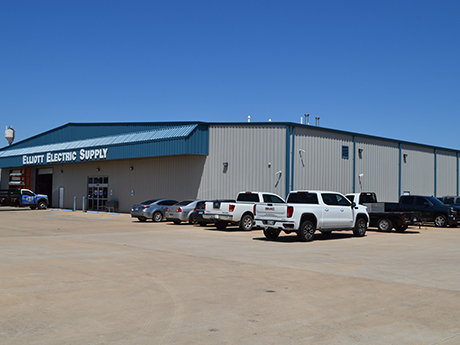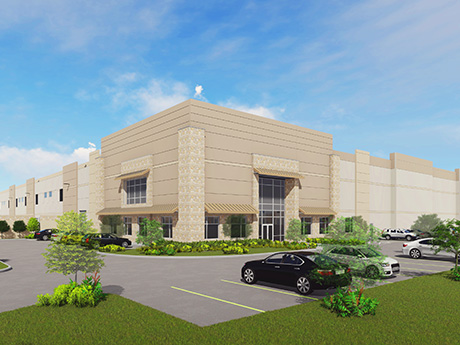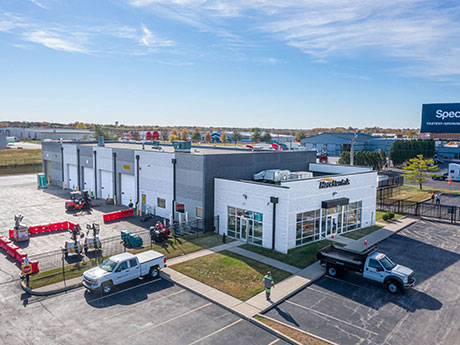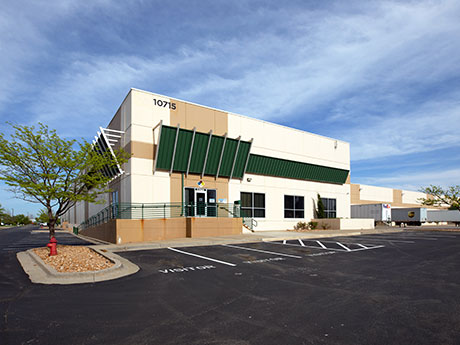There was a time when an investment in the Columbus, Ohio commercial real estate market had to be justified to outsiders and required a higher return to attract investors. After all, it sits squarely in “fly-over country” in the heart of the rust belt. With the exception of getting a superior return, why would an investor choose Columbus, over say, New York or Chicago? But that’s all changed. Cap rates are now as low as, or lower than, other major markets. Investors have been driven to those markets, despite having a lower cap rate, because they knew rent growth was continuous and the sales price would appreciate over time. For decades, Columbus’ sales prices had remained stagnant due to a lack of increase in lease rates. However, over the past two years, lease rates have been rapidly increasing in the industrial market, and projections expect that trend to continue. The Columbus office market hasn’t seen the same rental appreciation — yet. But projections indicate that there will be rental appreciation in office as well, mostly due to increased demand and lack of speculative development over the past two years, but also due to rising land and construction costs. Because of …
Industrial
With each year that passes in the current cycle, industrial real estate, along with multifamily, becomes more deeply ingrained as a darling asset class among commercial developers, lenders and investors. For all the talk about Americans being social creatures, there remains a massive contingent of the population that, when it comes to shopping, overwhelmingly prefers the convenience and relative anonymity of e-commerce. What started out as pandemic-related justifications for buying goods online as opposed to in-person has given way to a full-fledged, tacit acknowledgement of a trend that was already in place prior to February 2020. As such, demand for facilities — not just traditional, pure-play industrial spaces — that can function as e-commerce fulfillment and distribution centers continues to skyrocket. This trend is even more pronounced in markets with surging populations like those of major Texas cities. Industrial brokers are the ones who see it all. These professionals talk to tenants about acute real estate needs that are critical to serving customers without accruing exorbitant transit costs. Brokers work with developers who must build and price their spaces in accordance with their own escalating cost structures for land and construction. The deals that industrial brokers execute form the backbone …
The industrial market will be forever changed by the COVID-19 pandemic. Before the pandemic, demand for industrial space was closely tied with gross domestic product (GDP), with demand rising and falling alongside the U.S. output of goods. The pandemic has accelerated an already shifting economy to an “on-demand” economy. This shift was created by technology companies fulfilling consumer demand via the immediate provisioning of goods and services, and has now led to industrial warehouse demand being more in line with consumer spending versus GDP. Consumer spending and personal income are at all-time highs, with e-commerce sales growing exponentially throughout 2020 and 2021. Companies have been leasing warehouse space at a meteoric rate, driven by the need to store goods to accommodate the demand and mitigate risk from supply chain complications that have been brought on by the pandemic. Over the past two years, millions of square feet of warehouse space in the Chicagoland area have been leased for e-commerce use to tenants such as Walmart, Wayfair, Hello Fresh, Imperfect Foods and, of course, Amazon. Additionally, as traditional brick-and-mortar retailers transition to greater online sales, they require more warehouse space for goods storage, which has led tenants such as Target, Walmart, …
2021 has been an absolute whirlwind for the Minneapolis-St. Paul (MSP) industrial market. Plunging cap rates, liquidity growing faster than ever and a sharply felt shortage of new supply have defined the last year and will continue to define 2022. New faces on the development side are entering the market right and left to capture the huge profits to be had from the supply/demand imbalance. New construction has been stabilizing in six to eight months and institutions have ear-marked MSP as a forward-sale market. The following are a few of the salient trends that should be considered when contemplating the MSP industrial market. Liquidity growth Since the last trough in 2016, the MSP industrial market has experienced an average 30 percent year-over-year growth in sales volume. 2021 experienced nearly half a billion dollars more in industrial investment sales than 2020, according to Real Capital Analytics. Cap rate compression Over the last year, the MSP industrial market has experienced change unlike in any other year. Entering 2021, the low-water stabilized cap rate was 5.15 percent, but by year-end, that had sunk 82 basis points to 4.33 percent. Warehouse rates in the $8 to $9 NNN range, once rare, are now commonplace; …
By Randy Lacey, SIOR, senior vice president, CBRE | Oklahoma City; and Chris Zach, CPA, associate, CBRE | Oklahoma City Contrary to popular belief, the ongoing pandemic has been a boon to many aspects of the Oklahoma City economy. Industrial real estate growth has been more prominent than any other commercial sector. Those familiar with the city and surrounding area can vouch for the speed and intensity of housing demand and development, but industrial real estate has set itself apart over the last few years. OKC is Here to Stay Oklahoma City has a lot going for it. The market always has been well-positioned in terms of its central geographic location at the intersection of Interstates 35 and 40 and has seen tremendous growth and success in the last decade, with significant headway in the local industrial real estate market. The industry has proven its resiliency amid the pandemic and should continue to fare well into the future. But low costs of living and doing business have further bolstered the appeal of the community. In fact, Oklahoma City is only one of 14 cities across the country to add more than 100,000 people in the last 10 years, …
By Conrad Madsen, SIOR, co-founder and partner, Paladin Partners; and Kipp Collins, partner, Paladin Partners Just 20 years ago, the conventional wisdom and commonly held belief throughout the Dallas commercial real estate scene was that office and retail were preferable sectors to be in versus industrial. Looking back and reflecting on how industrial has gone from ugly duckling to white swan in just 20 short years, we can’t help but be glad that we didn’t take that advice. Led by Amazon, e-commerce has truly changed the world, and certainly industrial real estate by extension. Everyone talks about how e-commerce is what’s driving the explosion of warehouse and distribution center development and absorption across Dallas-Fort Worth (DFW) and beyond. But the fact of the matter is, e-commerce still only accounts for about 14 percent of total retail sales, according to data from the U.S. Census Bureau. Think about that for a moment — the current proportion of 14 percent leaves a tremendous amount of room for additional growth. Demand for warehouse and distribution space is through the roof; developers can’t build warehouses fast enough these days, and yet the market is nowhere close to reaching its peak. Inventory Growth There is …
This past year, many commercial real estate sectors and geographies that had been affected by the initial impact of pandemic-induced shutdowns demonstrated improvement. Across Missouri, we saw very robust levels of sales activity, as well as new construction and development — with more than $2.4 billion in overall commercial real estate sales volume through the end of third-quarter 2021. Although statewide growth was reported across all property types and sectors, industrial was especially strong, while retail emerged with slightly less consistency, but was positive nonetheless. The forecast for 2022 is bright, especially as retailers announce expansion plans and developers break ground on new projects. St. Louis is central to growth As an important secondary U.S. market, St. Louis and the surrounding areas are experiencing high levels of demand and activity. In the first three quarters of 2021, the St. Louis market reported $1.7 billion of overall commercial real estate sales volume, representing more than 70 percent of statewide activity. These statistics illustrate the sentiment of today’s active buyers who agree that St. Louis is a stable and attractive market for investment. Within the metro area, St. Charles County stands out as one of the fastest-growing counties in the country, reporting …
2021 was a historic year for Kansas City industrial real estate. The local market size eclipsed 300 million square feet of space, representing the 16th-largest industrial market in the U.S. Class A building inventory is nearly 44 million square feet, ranking 15th in the nation. Of the industrial building inventory, 14.4 percent is Class A, ranking ninth-highest in the country, suggesting the inventory that we have is quality compared with other U.S. markets. Capital markets are firm influencers with soft voices. Nationally, the amount invested is a record high. Rental rate growth is at an all-time high and investors are confident that this growth will sustain. While you may not read about where capital is being deployed, the institutional development and investment activity provide the output to see where institutions have comfort. Cap rates in the Kansas City area broke records and saw compression in the last year of 50 to 150 basis points depending on the asset class. This is a result of investors seeking return and believing in the long-term strength of tier II industrial markets and yield premium afforded in these markets compared with gateway cities. Well-positioned assets traded with cap rates in the low to …
By Zack Taylor, senior vice president, Colliers Houston’s industrial market continued to see strong leasing activity in the third quarter. Overall net absorption for 2021 should easily pass 20 million square feet, making it the best year on record by a long shot. For context, Houston’s industrial market has, on average, absorbed between 8 million and 11 million square feet of space per year since 2014. Houston’s North and Southwest submarkets absorbed the most space in the third quarter of this year, led by Lowe’s Home Improvement taking down 1.5 million square feet and Amazon taking 1.9 million square feet in each of those respective submarkets. Total marketwide leasing volume for the year is well over 30 million square feet and does not show any signs of stopping as we hit the midpoint of the fourth quarter. Direct vacancy is continuing its downward trend, but rental rates have largely remained the same on new product. Second-generation infill warehouses are experiencing the greatest increase in rents, especially for tenants with requirements between 20,000 and 50,000 square feet. Many of these tenants are faced with a dilemma: They can either accept higher rents for their infill locations or relocate to more expensive …
Columbus has been the shining star of the industrial real estate market over the last five years, and for the eighth straight quarter, it has more than 5 million square feet under construction. This year is on track for more than 10 million square feet, with half of that already absorbed in the first part of the year. A question I always get is, “Why Columbus?” The answer (and the sell) is quite simple — location and population. Columbus is a 10-hour drive within 46 percent of the country’s population and manufacturing base. Incentives play a large role in the process as well, which enables developers to be competitive and drives tenants to the markets. Labor is always a factor in site selection, but now more than ever it tops the list as one of the most vital components of the decision-making process of choosing a site. With the Columbus region ranking No. 1 in the Midwest for population, jobs and GDP growth, it’s natural for developers to be highly attracted to the area. Columbus has three major industrial submarkets: West Jefferson, Rickenbacker and Etna Township. The West Jefferson submarket is home to Amazon, Target, Restoration Hardware and JoAnn Fabric. …



